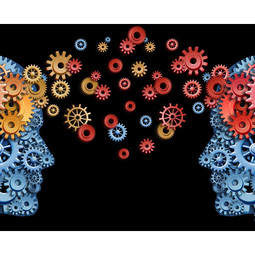
Published on 08/03/2016 | Strategy
Many companies are engaged in some sort of digital transformation by considering the impact of big data, advanced analytics, 3D printing, IoT or even collaborative robots.
It seems that far fewer, however, realise how important it is to go first through a cultural change to take full advantage of these new technologies. Indeed, beyond their current hype, it is our way of operating, interacting and even behaving that is being reassessed by their implementation.
Digital is generally impacting business organisation in two fundamental ways among others:
1. It allows real-time more accurate data to come directly from the front line without the bias and delay of current cumbersome reporting methods that can often lead to the wrong outdated decision making process;
2. It facilitates more connected cross-functional autonomous communities of experts able to better interact to solve problems and respond to market changes.
Companies such as Spotify, a music streaming service, or Zappos, an e-commerce site, have new types of organisations becoming iconic that could also benefit more traditional companies.
Spotify, for example, has fully-empowered cross-functional teams called “tribes” in charge of serving the company vision through application coding. Zappos, for its part, is implementing a model based on employee happiness. They recently eliminated all job titles and instead organise teams into “circles”, each of which is assigned a general task.
Some more traditional companies started to understand the limits of their command-control mechanisms in a fast changing world. For example, Officience, a global outsourcing industry player located in Vietnam, has given employees total power. Favi, a foundry in north of France, has also become famous for fully empowering workforce even prior to digital era.
As generation Y and Z will rise with new workplace expectations in a more and more digital world, we can sense that traditional companies will need to acquire more quickly than ever a new mindset in order to keep attracting talents and have the agility required to address fast moving markets and associated disruptions.
Here are some views on how we might consider the evolution of front-line management, middle management and top management to support digital transformation.
Front line workers might be able to express themselves more directly with their peers for coordination, problem solving and sharing progress. They will have the data support to become autonomous and so better monitor and adjust in real time their work environment. Co-bot/connected tools and other types of software automation will also free up their time so that they can think about optimisation and adapting processes. In this sense, front line will have the framework in which to be become more operationally agile with the ability to bypass current heavy hierarchy to take the right decisions.
Middle management’s role might need to evolve as the reporting side of it will be largely diminished by automatized direct reporting. Cross-functional coordination they currently cover might also be replaced by front-line connected communities, meaning that middle management might act more and more as a support to front line problem solving. For this population, the social impact of this changing role might need to be attentively and carefully managed. Raising their skills to have the flexibility to operate in different types of businesses will become essential when fast resource reallocation might take place.
Top managers might be in more direct contact with front line through real-time customised data from operations for better and quicker decision-making and strategic adjustment. They will be supported on a continuous basis by digital tools when solving problems and the decisions taken will be more predictive than based on past performance. In this role, their core activities will focus more on developing and sharing a sense of purpose with the rest of the community in charge of finding how to implement it and anticipating rapid market evolution.
Globally, we can sense that traditional organisations might become less hierarchical stepping towards digital native models and will find some grounds in the continuous improvement programmes most of them initiated three decades ago. They will be more than today dedicated to manage value streams with a shared vision in a highly collaborative set up.
In that context, new mindset and core values underlying new operating modes will increasingly be at the heart of the strategy in order to ensure that engagement and agility are not just buzzwords but a reality to thrive in a better world.